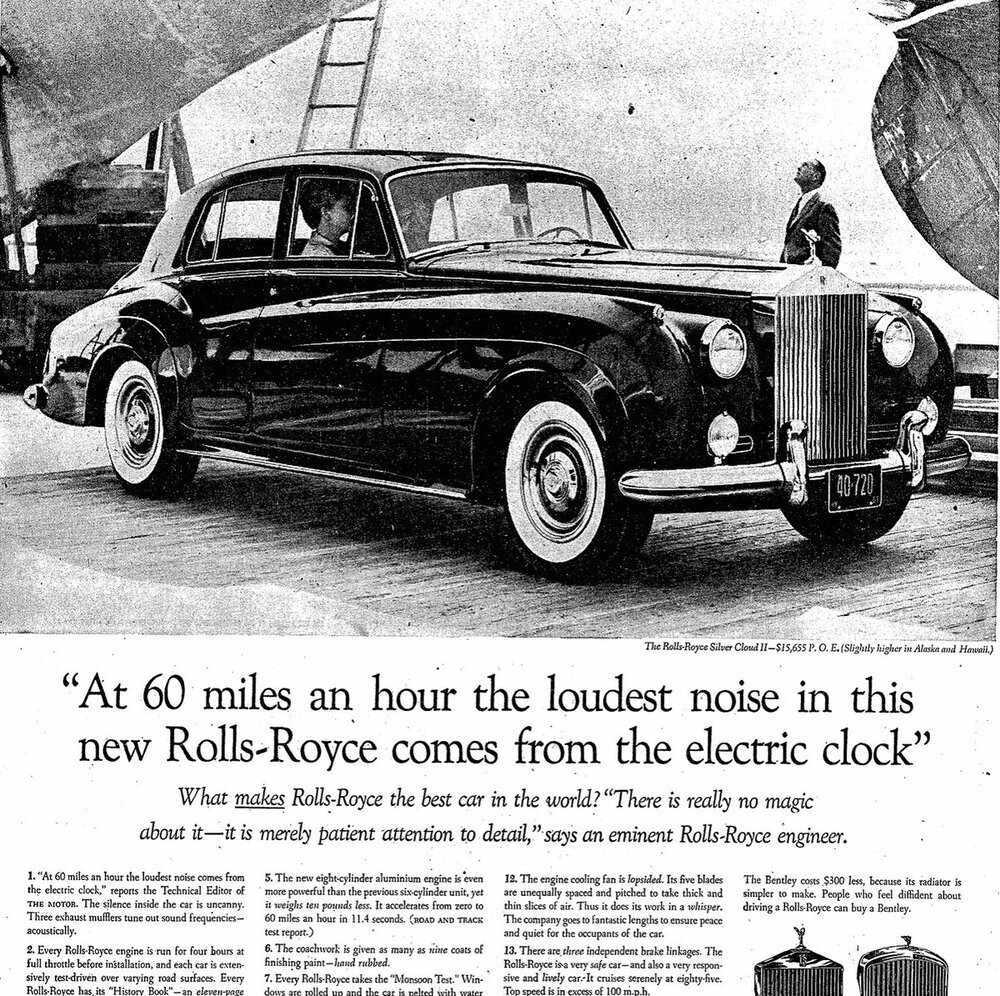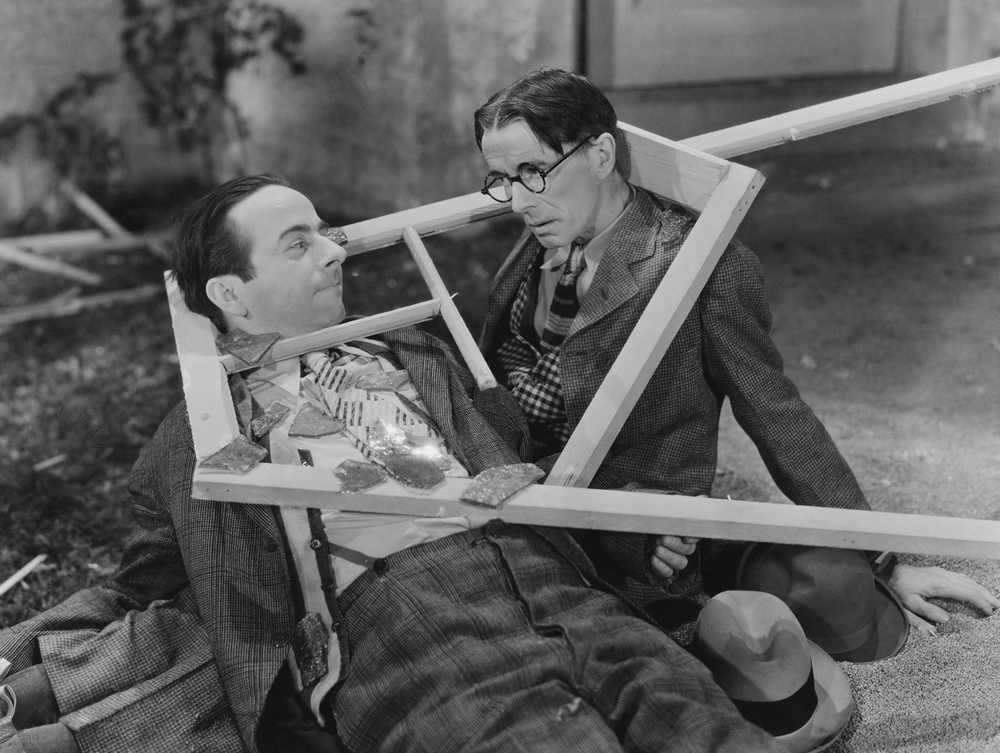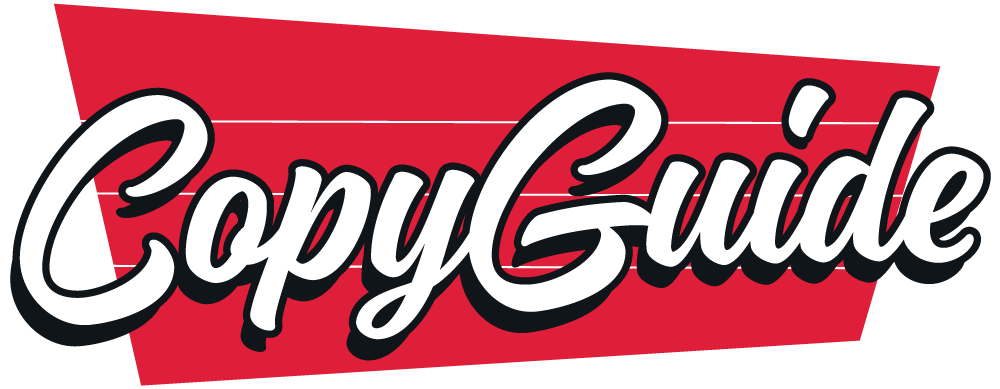When I first began copywriting, I made one crucial false assumption: that because I enjoyed writing, I’d be a natural copywriting talent. I knew how to weave a witty sentence together. My grammar and punctuation were impeccable. I could write a mean paper for English class.
But copywriting is a different beast altogether. It’s not about writing what you want, but rather understanding what the client wants and needs – and then delivering that in an irresistibly engaging way. And that takes some serious practice.
If you’re like I was then, with some core skills to your name but little to no copywriting experience, your best bet is to practice ’till you feel like a seasoned pro. Then you chase client work — maybe starting as a small business copywriter — or launch a copywriting side hustle with confidence. Here are twenty of the best copywriting exercises that’ll help you do just that.
5 Copywriting Exercises To Learn The Craft

I’ve met plenty of incredible copywriters who launched into the industry without any prior experience or knowledge. But they didn’t stay oblivious for long; in fact, they ran the extra mile to become as knowledgeable as they possibly could in the world of copy.
Let’s take a look at five exercises that can help you to ‘get in the know’:
1. Take a course.
Now, we all know that online courses are a dime a dozen these days. Anyone can sell you a course with the right marketing tricks.
I’ve noticed that copywriting courses are a particularly hot commodity, probably because copywriting is seen as a skill that can be easily learned – but most courses will leave you high and dry if you don’t do your research to find the right one.
I recommend the Creative Circus Copywriting Portfolio School; it takes a super in-depth approach to advertising copy, and you’ll come out of it with an epic portfolio. Otherwise, something like The Copy Cure will give you a more affordable leg-up.
You don’t at all need to complete a course; most freelancers don’t, and there’s a ton of information freely available online. But if you’re feeling lost and want to make sure you cover all your bases, a course can be a great way to do that.
2. Follow the pros.
Imposter syndrome is a real pain in the behind for us copywriters. We’re always questioning our skills – I know I do – and when constantly bombarded by ‘copywriting gurus’ on social media, it’s all too easy to feel like you’re never going to measure up.
Sometimes, though, it really pays to tune into the pros. And not the ‘gurus’, per se; the ones shouting the loudest aren’t always the best teachers. I’m talking about those who have been in the business for a long time, have learned from their mistakes, and are genuinely passionate about teaching others.
The Freelance Copywriter Collective is one great example of this. It’s an exclusive community run by Valerio Puggioni, created for the sole purpose of sharing wisdom and tips between experienced and up-and-coming freelance copywriters. (All free, of course).
Here are a few other experts and groups worth following:
- Joanna Wiebe, founder of Copyhackers and author of The 10x Rule for Writers
- Kevan Lee, content strategist at Buffer and author of 25 Simple Tips to Improve Your Writing
- The Content Marketing Institute. “Our mission is to advance the practice of content marketing, through online education and in-person and digital events.”
- ProCopywriters (UK), an alliance of over 950 copywriters
It’s important to develop your own style, and just as important to learn from those who have come before you. Following the right crowd can help with both. You might even try getting a copy audit of your work, so you can get in-depth feedback to learn from.
3. Find a mentor.
Mentors are one of the best ways to learn just about anything. I didn’t have to dig far into the internet to find evidence backing this up; I even found a study that suggested people with mentors double their knowledge acquisition rate.
But what’s even better is that finding a mentor needn’t be difficult – especially when it comes to copywriting. Chances are, you know someone who is already in the business, and if you don’t, social media makes it easy enough to find them.
I love this blog post on Copyblogger, in which author Dave Navarro talks about the simplicity of being mentored by your copywriting hero. It’s pretty straightforward; just choose a copywriter whose style you admire, and study as much of their work as you can. Navarro even suggested writing copy out by hand – that’s how he did it.
4. Study magic (aka, persuasion).

There’s a lot of crossover between copywriting and sales; you’re both trying to sell something to someone, whether that’s a product or an idea. And because of that, it’s super important for copywriters to understand the principles of persuasion.
Luckily, there are plenty of great books on the topic. My personal favourite is Influence: The Psychology of Persuasion, by Robert Cialdini. It’s a dense read, but it’s crammed full of useful information.
If you’re looking for something a little more light-hearted (and less scientific), check out The Art of Seduction, by Robert Greene. It’s not specifically about persuasion, but it will give you a good understanding of the types of seduction techniques that can be used in copywriting.
5. Use CopyGuide!
Up until this point, I’ve been writing for the up-and-comers; the aspiring copywriters out there who are looking to hone their skills. But I also know that some of you are going to be small business owners and marketers who are simply looking for a little help with your website’s copy.
CopyGuide was created as a way to help you, specifically, overcome the industry giants. You don’t need to be a big guy to sound like one – in fact, all you need is a killer copy strategy.
I recommend starting with the Customer Research CopyGuide. Because you can’t write great copy until you first understand the mindset of your audience.
5 Exercises to Practice Copywriting Techniques
So, you’ve gained some copywriting know-how. Great! Your next step is to put that knowledge into practice. Trust me when I say that practice is going to mean the difference between a so-so writer and a stellar one; if you want to write like the best, you need to write a heck of a lot.
But what’s the best method of practice? Here are five exercises that will help you improve your skills, step by step.
1. Write a list of your favourite copywriting one-liners.

Some of the best copy you’ll ever read comes in the form of one line, whether from an ad or simply quoted by a stellar copywriter. It takes true mastery of the pen to deliver a punch in such a small number of words.
For instance, some of my all-time favourites:
- Rolls-Royce: “At 60 miles an hour, the loudest noise comes from the electric clock.” (1958)
- Ann Handley: “In an online world, our online words are our emissaries; they tell the world who we are.”
- Adidas: “Impossible is nothing.” (1974)
- Dollar Shave Club: “Shave Time. Shave Money.” (2013)
- Meow Mix: “Tastes So Good, Cats Ask for It by Name.”
Write ’em down, stick ’em up, keep one on your phone wallpaper – wherever you like. When you need a quick dose of inspiration, these one-liners will be there to help get your creative juices flowing.
2. The classic re-write.
I know it’s not good to have an inflated ego, and that’s not at all what I’ll suggest here… but just for a moment, assume you’re the world’s authority on copywriting. Take some web copy, an article, an ad, or anything you like and rewrite it.
Again, don’t be intimidated if the original author is more experienced than you. You’re the expert now, remember? Make any changes that come to mind. Go with your gut. The end product should be something you’re proud to call your own.
You can also take this challenge on the road. Whenever you drive past a roadside ad, rewrite it in your head or think of a better alternative. You’ll love the confidence boost, trust me.
3. Keep a swipe file.
We copywriters tend to have an eye for great headlines, phrases, and calls to action. (They’re made to catch our attention, after all). It really pays to keep a folder or document of these gems, so you can refer back to them when you’re in a rut. We call these folders ‘swipe files’.
There’s no need to overcomplicate things – just make a folder on your desktop, and screenshot or copy and paste any bits of text that make you look twice. You could even set aside time each week to look through your new additions and think about what made you add them in the first place.
4. Work those memory muscles.
I mentioned this before, but writing out someone else’s copy is a great way to be inadvertently mentored by writers you look up to. It also trains your muscle memory; if you write out enough killer copy, you’re bound to pick up some tips and tricks along the way.
Now, you don’t need to go writing out the entirety of The New York Times every day (unless you really want to). Look for copy that actually compels you. You’re trying to build your own unique style, so there’s no point copying styles that you don’t actually want to emulate.
If you want to take things a step further, try writing a new piece of copy in the exact same tone as a writer you look up to. The end result should sound like it came from their brain, not yours – a crucial skill for any copywriter to learn.
5. Read and trim.
This next exercise happens in two parts. The first step is to take a piece of your copy; it can be anything, whether an ad, an article, or a landing page. Now read it aloud (or in your head, if you’re feeling shy. But aloud is definitely more effective).
Unless this is already a final draft, you’ll notice a few things right off the bat:
- Some words feel surprisingly clunky when spoken aloud
- You have to breathe in weird places, such as mid-sentence
- Certain phrases just don’t make sense at all
Once you make a few changes from those observations, it’s time for the second step: trim the fat. And let me warn you – it’s gonna hurt. We copywriters tend to get overly attached to our words, but the fact is that not all of them are necessary. You’ll be much better off without the dead weight.
5 Ways to Use Observation

Fortunately for us copywriters, thousands of masters of the trade have come before us and left a treasure trove of knowledge in books, articles, blog posts, and beyond. Some of the industry greats are still writing today.
What does that mean for you? Well, it points to one incredibly obvious thing you can do to become a better copywriter: READ. Observe. Take notes. Here are five ways to use observation to improve your skills:
1. Note how people react.
Never mind how you respond to particular ads and copy – we’ve already covered that. How do other people respond? When you’re in a car with friends, what billboards do they point to and laugh at? When you’re walking down the street, what do you see people reading? What makes them stop in their tracks?
If you note down enough of these things, you’ll start to see patterns in human behaviour. And that’s incredibly valuable information for a copywriter.
For example, you might notice that people are more likely to respond positively to ads with puppies in them. (Simple, but true). This will point you toward a fact of human nature – we’re emotional beings, and the best ads appeal to those emotions.
2. Study the bad as well as the good.
Most of my tips thus far have been focused on great writing; the writing that makes you take a second look, and that compels you to read on. But it’s just as important – if not more so – to study bad writing.
Why? Because bad writing is everywhere. And if you can understand why it’s bad, you’ll be that much closer to understanding what makes good writing good. You’ll also be able to avoid the common traps that bad writing falls into.
Keep a ‘burn book’ of all the copy that makes you squirm in your seat. It’s pretty fun after a while, and you’ll be amazed at how much you learn.
3. Features vs benefits.
On the subject of bad copy, there’s something that most boring ads have in common – they focus on the features instead of the benefits. Take a look at these two versions of the same ad:
- “Our gummy supplements are filled with five key vitamins – A, E, D, and C.”
- “The vitamins in our gummies are proven to boost your immune system and brain function.”
Health specifics? Blah, blah, blah. Nobody cares. Nobody wants to know about the vitamins, minerals, and antioxidants in a gummy supplement. They want to know how those vitamins are going to help THEM.
When you’re observing the copy around you, note which ads focus on features and which ads focus on benefits. And take note of how people react to each. Chances are, people will be more drawn to the ads that focus on benefits. But having said that, there are exceptions to every rule: more technically minded people (or those who are looking for a specific solution) mind actually resonate more with feature-heavy copy. There are no absolutes in this game!
4. Read the daily headlines.

I’m not a huge fan of mainstream news, mostly because we’re hard-pressed to find an outlet that isn’t rife with bias. And their headlines are downright obnoxious at times. (Most of the time).
But there’s one thing we can’t deny – those headlines pull their weight in terms of audience numbers. The most tantalizing headlines are the ones that get clicks.
So, what can we learn from them? I’m not suggesting you take their choice of style because it’s usually trashy. What I do suggest, however, is observing the strategies these news writers employ in their headlines. What emotions do they appeal to? Which words appear first? What ideas do they emphasize, and which are eliminated?
5. Ask around.
Even if we don’t realize it at first, most of us have a favourite ad. For instance, I’ve been obsessed with Melbourne’s metro ‘Dumb Ways to Die’ campaign since it came out many years ago. You read a few of my favourite one-liners earlier, too.
So, what’s stopping you? Ask friends, family, colleagues – find out which ads they love, and why. It’s a great way to get insights into what makes an ad effective, and it can also help you brainstorm new ideas.
Don’t be afraid to browse around online, either. Look at which blogs, brands, and websites are most successful. What do their headlines look like? What kind of content do they produce? What trends are they channelling?
5 Ways to Learn From Your Copywriting Mistakes

For the final stretch, I want to cover perhaps the most important aspect of any endeavour: learning from your mistakes. We can’t possibly become the copywriters we want to be without embracing our errors and figuring out how to turn them into stepping stones.
1. Always be writing (and publishing).
Here’s an underrated fact for you: you don’t need to be a working copywriter to be a good copywriter. Don’t wait for your first job or freelance gig to start honing your skills. The more you write, the better you’ll get.
I’d suggest launching a blog right from the get-go. You could even set yourself a daily or weekly writing challenge, like Solomon Tsitsuashvili’s 365 Days of Copy.
Wherever you publish, make sure you’re putting your work in front of an audience. Ask for feedback. The more you get comfortable with criticism, the better.
2. Start with one-off gigs.
It’s scary to launch straight into freelance work, especially if you’re new to the game. But it’s also a great way to learn and build your portfolio.
Now, I’m not saying you’ll be paid exceptionally for those first few gigs. But you’ll get invaluable experience and a chance to see what it’s like to work with clients.
Some of the best places to find freelance work I can think of are Upwork, Fiverr, and Craigslist. But be warned – these sites come with their share of scams. Upwork is the most reputable of the three, from my experience.
3. Try selling something. (Seriously).
You can practice writing copy for someone else, sure – but there’s another option, which is jumping right into the thick of things. Use your powers of persuasion to try and sell something.
It could be an affiliate product, a course you’re promoting, or even your own services. It’s pretty easy to start affiliate marketing these days (thanks, Amazon) and there’s no shortage of online courses to promote.
Of course, if you’re particularly ambitious, you could always start your own online business and write copy to go with it. Lots more work, but the rewards can be great.
4. Try A/B testing.
Copywriting is all about testing and experimentation. You never really know what’s going to work until you put it out there.
That’s where A/B testing comes in; it’s a stellar strategy for figuring out what works and what doesn’t. You can use it for everything from headlines to email subject lines, landing pages, and even entire websites.
There are a ton of A/B testing tools out there, but my personal favourite is ConvertKit. It’s easy to use and has all the features you need to get started. (The 14-day free trial is pretty epic, too). Just make sure you use an A/B testing sample size calculator to ensure you get valid test results.
5. Start a copy group.
There are plenty of copywriting groups out there, but who says you can’t start your own? You’ll have a smaller pool of writers to begin with, and therefore giving/receiving feedback will be easier to manage.
Starting a group means you can be more selective with your members, and everyone will be accountable to one another. This is a great way to keep each other motivated – and honest, too. Make it totally clear from the get-go that it’s not a ‘build me up’ group where everyone’s the best writer in the world. Criticism is both welcomed and required.
A group like this gives you the best chance of improvement because you’ll be picking up on other people’s mistakes while fixing up your own. Can’t get any better than that.
Wrap-Up
There you have it – 20 ways to boost your copywriting skills. And let me tell you, using even just one or two of these strategies will make a world of difference. Don’t make the mistake of thinking you can’t improve, because you can (and you will).
That’s enough from me. Get your copy cap on, and get writing; the ads won’t work unless you do!
